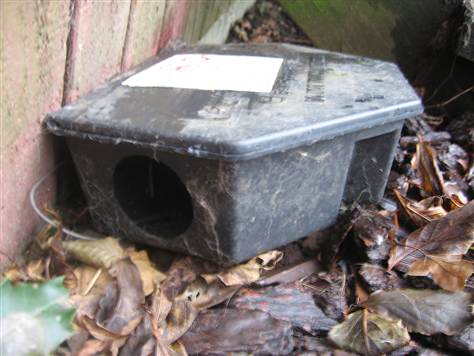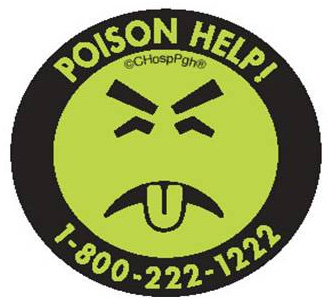Kids Eating Rat Poison Is an "Acceptable Risk" for ALEC
An American Legislative Exchange Council (ALEC) member is defying Environmental Protection Agency (EPA) rules limiting the sale of rat poisons that pose dangers to children and the ecosystem. ALEC representatives say that kids eating rat poison is an "acceptable risk" that does not justify government intervention in the market.
For decades, tens of thousands of young children have become ill after touching or ingesting rat poison applied "loose," in pellet form. And a variety of wild animals, from bald eagles to bobcats to owls, have been found dead with lethal levels of a super-toxic rodenticide in their systems.
EPA Rules Limit Some Rodenticides
After thirteen years of studies, hearings, reports and legal battles, the EPA announced in 2008 rodenticide manufacturers would have three years to adopt limits on the sale of the products.
 Under the new rules, rat poison will no longer be sold "loose," in pellet form, for use in one's home or apartment, but can be purchased in "bait stations" (like the one pictured) designed to keep out children and other animals. Additionally, certain products known as "second generation," or "super-toxic" rodenticides, will no longer be sold to residential consumers, as they pose a special risk to wildlife. These products are sold under brand names like Havoc, Talon, Ratimus and d-CON. Both the second generation chemicals and other rodenticides will still be sold "loose" to professional exterminators as well as employees of farms, warehouses, and other commercial installations. But the pellets may not be used in areas where children may find them.
Under the new rules, rat poison will no longer be sold "loose," in pellet form, for use in one's home or apartment, but can be purchased in "bait stations" (like the one pictured) designed to keep out children and other animals. Additionally, certain products known as "second generation," or "super-toxic" rodenticides, will no longer be sold to residential consumers, as they pose a special risk to wildlife. These products are sold under brand names like Havoc, Talon, Ratimus and d-CON. Both the second generation chemicals and other rodenticides will still be sold "loose" to professional exterminators as well as employees of farms, warehouses, and other commercial installations. But the pellets may not be used in areas where children may find them.
Most of the rodenticide industry complied voluntarily with the new rules, which were scheduled to go into effect in June, 2011, but three companies held out. One of them, d-Con manufacturer Reckitt Benckiser, makes 12 of the 20 products targeted by the EPA. The global corporation sued in 2010 to force the agency to follow procedures for a formal "cancellation" of the products, and recently announced plans to "vigorously oppose" implementation of the measures throughout the cancellation process. Reckitt Benckiser is an ALEC member and has a representative on the ALEC Public Safety and Elections Task Force.
ALEC itself and other allies have jumped to the defense of the global corporation.
Poisoned Children, EPA Delays
 The EPA knew by the early 1980s that rodenticides were finding their way into the food chain and children were being poisoned. Between 1993 and 2008, U.S. poison control centers received 12,000 to 15,000 calls each year about kids under age six being exposed to rat poison. In 1998, the Clinton administration's EPA deemed that rodenticides had to taste bitter, so kids wouldn't eat the products, and be colored with a bright dye, so it would be obvious if they did. The EPA backed down from these requirements in 2001 after George W. Bush took office and made the measures "voluntary," reportedly due to industry pressure.
The EPA knew by the early 1980s that rodenticides were finding their way into the food chain and children were being poisoned. Between 1993 and 2008, U.S. poison control centers received 12,000 to 15,000 calls each year about kids under age six being exposed to rat poison. In 1998, the Clinton administration's EPA deemed that rodenticides had to taste bitter, so kids wouldn't eat the products, and be colored with a bright dye, so it would be obvious if they did. The EPA backed down from these requirements in 2001 after George W. Bush took office and made the measures "voluntary," reportedly due to industry pressure.
After seeing no drop in the number of children being poisoned by rodenticides, in 2004 the Natural Resources Defense Council (NRDC) filed suit to force the EPA to take action, and a New York district court criticized the agency for reversing itself and caving to pesticide manufacturers. The court wrote, "the EPA lacked even the proverbial 'scintilla' of evidence justifying its reversal of the requirement it had imposed, after extensive study, only a few years before." In response, the EPA took steps to regulate the products. Those rules were intended to go into effect this year, but were delayed by the resistance of Reckitt Benckiser and two other rodenticide manufacturers, Liphatech and Spectrum Group.
The EPA estimates that the unreported child exposure rate may be four times as high as the 12,000-15,000 calls to poison control centers each year, and some believe the number to be ten times as high. Poisoned young children can experience internal bleeding, bloody urine, bleeding gums, and blood coming from their ears. African-American and Hispanic children living below the poverty line have been disproportionately affected. A New York study found that 57 percent of children hospitalized for eating rat poison between 1990 and 1997 were African-American and 26 percent were Latino.
"Acceptable Risks"
 "There are certain levels of acceptable risk in society," says Todd M. Wynn, director of the ALEC Energy, Environment, and Agriculture Task Force, in an interview about the EPA rules with the Heartland Institute's Heartlander website. "And parents play an important role by weighing the potential risks and benefits of using a product."
"There are certain levels of acceptable risk in society," says Todd M. Wynn, director of the ALEC Energy, Environment, and Agriculture Task Force, in an interview about the EPA rules with the Heartland Institute's Heartlander website. "And parents play an important role by weighing the potential risks and benefits of using a product."
"Unfortunately, EPA expands its reach into the American economy more and more each and every year," Wynn said. "This year it will be d-Con, but next year another useful product will be burdened by additional regulations or banned outright from the market."
"It is outrageous to say it is 'acceptable' for tens of thousands of kids to get poisoned each year," said Aaron Colangelo, an attorney for the NRDC. Colangelo told the Center for Media and Democracy that "there is not an undue economic burden associated with reformulating these products," pointing out that the rest of the industry had complied with the new rules without adverse economic impact. Additionally, he said, "the health care costs for treating these kids certainly outweigh the economic costs of reformulation."
As for the claim the EPA action is an example of the "nanny state" with the government substituting its judgment for that of parents, Colangelo says a child's exposure to rat poison often occurs in settings outside of a parent's control. "It is one thing to say parents need to be conscious of what their kids are doing in their own homes," he said. "But exposure [to the rodenticides] is not limited to one's own home."
Colangelo tells CMD "kids find it everywhere. Outside their apartment complex, or in public parks, or in schools, or in public housing. Little kids will put anything in their mouth."
Will "Inferior" Products Cause Rat Infestation?
Reckitt Benckiser's marketing director, Sabrina Rodgers, tells the Heartlander that the EPA's action would force consumers to choose from "inferior" or "less safe" rodent control products, and that rat populations could "increase dramatically, resulting in a possible public health issue." ALEC's Wynn also argues that low-income people are most afflicted by rodent problems and will be most affected by the proposed ban on d-Con.
 Colangelo calls these statements "fearmongering." He says "the EPA has determined that the safer alternatives are effective, and there is not a single statistic or study saying that rat populations will go up" as a result of the new rules. As for the claim that the other products are "inferior," Colangelo notes that Reckitt Benckiser has continued to sell its d-Con rodenticide, but manufacturers that have voluntarily complied with the EPA rules have remained competitive against d-Con -- which would not happen if the compliant products were "inferior." "Manufacturers of these products will only make money if they are effective," says Colangelo.
Colangelo calls these statements "fearmongering." He says "the EPA has determined that the safer alternatives are effective, and there is not a single statistic or study saying that rat populations will go up" as a result of the new rules. As for the claim that the other products are "inferior," Colangelo notes that Reckitt Benckiser has continued to sell its d-Con rodenticide, but manufacturers that have voluntarily complied with the EPA rules have remained competitive against d-Con -- which would not happen if the compliant products were "inferior." "Manufacturers of these products will only make money if they are effective," says Colangelo.
Bell Laboratories, which manufactures the Tomcat rodenticide, reports that their products remain equally effective after voluntarily complying with the EPA rules. Bell Laboratories has also seen a 60% decline in accidental human ingestion since it introduced its repackaged products on January 1, 2011.
Environmental Dangers
ALEC's Wynn tells the Heartlander "any time government intervenes in the marketplace, there will be unintended consequences." But environmentalists say the second generation rodenticides have unintended consequences for the ecosystem.
 Nancy Golden, a U.S. Fish and Wildlife Service toxicologist, told Environmental Health News the rat poisons are "pervasive" throughout the ecosystem "and are turning up in places we did not expect ... They're certainly not contained where we think they are." Studies in the U.S., Canada and Europe have shown that the super-toxic, second-generation rat poisons are killing a wide variety of wild animals, including mountain lions, bobcats, and deer, as well as bald eagles, owls, and hawks. Barn owl populations have plummeted in places like Canada, which research suggests has been caused by rat poisons exacting a toxic toll on the environment.
Nancy Golden, a U.S. Fish and Wildlife Service toxicologist, told Environmental Health News the rat poisons are "pervasive" throughout the ecosystem "and are turning up in places we did not expect ... They're certainly not contained where we think they are." Studies in the U.S., Canada and Europe have shown that the super-toxic, second-generation rat poisons are killing a wide variety of wild animals, including mountain lions, bobcats, and deer, as well as bald eagles, owls, and hawks. Barn owl populations have plummeted in places like Canada, which research suggests has been caused by rat poisons exacting a toxic toll on the environment.
Researchers hypothesize that non-target animals ingest the chemicals when they eat a rat or mouse that consumed poison but had not yet died. The second generation chemicals pose a greater risk than earlier formulations because they are highly-concentrated, presenting dangers to animals further up the food chain. EPA studies report the second-generation chemicals present "significant risks" to wildlife, with rodenticide residue found in a majority of many animals studied, and possibly causing death in as many as half.
Under the EPA rules, the second-generation chemicals will still be sold "loose" to professional exterminators and owners of commercial and farm properties. The U.S. Fish and Wildlife Service and others wanted a complete ban on outdoor use but the EPA did not go that far.
EPA Rule Culmination of Long Process
 The EPA has known about the risks posed by the rodenticides since the early 1980s, and the rules scheduled to take effect in June 2011 were the result of a decades-long effort. But with ALEC member Reckitt Benckiser and other rodenticide manufacturers opposing the EPA rules, it may be a year or more before final action is taken.
The EPA has known about the risks posed by the rodenticides since the early 1980s, and the rules scheduled to take effect in June 2011 were the result of a decades-long effort. But with ALEC member Reckitt Benckiser and other rodenticide manufacturers opposing the EPA rules, it may be a year or more before final action is taken.
Despite the delays, cities like San Francisco are asking vendors to voluntarily remove the banned rodenticides from their shelves. And concerned citizens are organizing. Lisa Owens Viani founded a group opposed to the use of the products after finding dead Coopers hawks that, according to tests, had been killed by rodenticides. "The companies that are fighting (the EPA) are some of the same ones that make rodent traps," Viana told the San Francisco Bay Guardian. "They will still have plenty of other products to sell."
For Colangelo, it is a disgrace that a few "hold-out bad actors from the chemical industry" are further delaying EPA regulation of the rodenticides, despite decades of evidence of harm.
"It should not take this long to do something simple like protect toddlers from rat poisoning."
For more d-Con art, visit Jason Clay Lewis' website.





Comments
If a half truth = a whole
If a half truth = a whole lie, then the corporate-controlled media (and most especially Fox News) broadcasts nothing but lies. So, if truth is what you seek, I expect that you do not consume your news from television networks or their respective websites?
ALEC
Republicans and Tea Party types must be pretty hardcore when ALEC can get away with sanctioning the poisoning of children. Supposedly, those without conscience in a population number only 15%, but the Tea Party rosters and ALEC membership stats suggest the number is much higher. In that matter, director George A. Romero got it right way back in 1968: civilization isn't at war with barbarians, it's at war with zombies without souls. The cadavers still roam the countryside, they're just wearing business suits.
Just read an article from
Just read an article from Chuck Norris about the levels of arsenic in some apple juices and he didn't seem too happy about it. Now here's ALEC suggesting that there are allowable levels of toxins in our foods. Now, as I recall, Mr. Norris is conservative. ALEC is conservative. Only one of these viewpoints can actually be conservative. Hmmm...